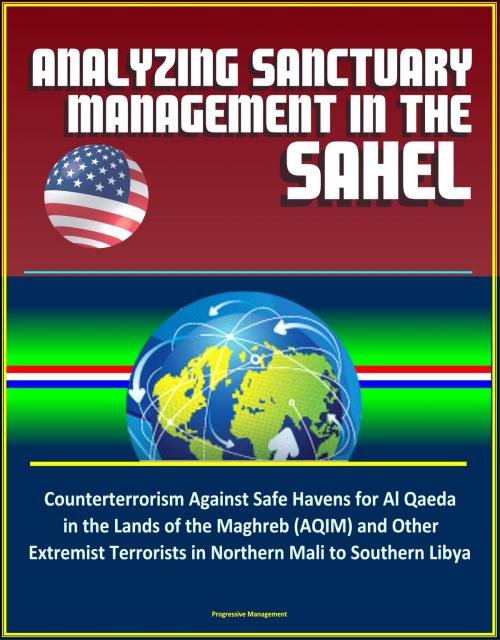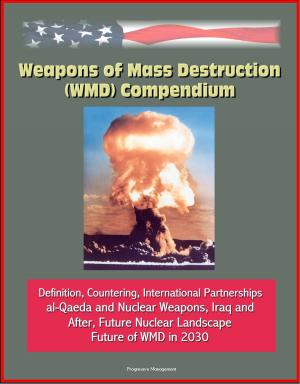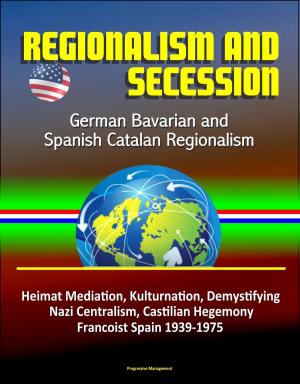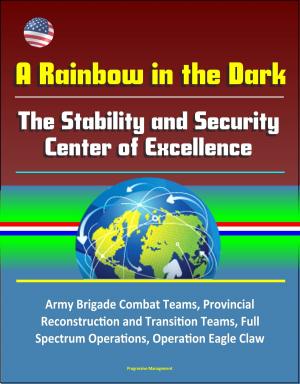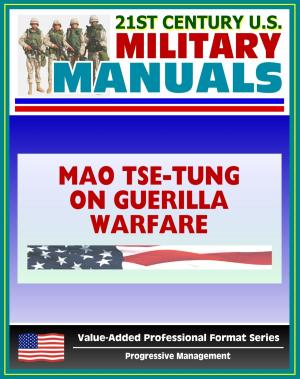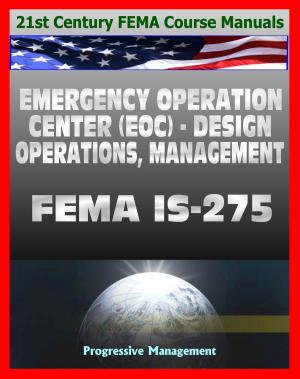Analyzing Sanctuary Management in the Sahel - Counterterrorism Against Safe Havens for Al Qaeda in the Lands of the Maghreb (AQIM) and Other Extremist Terrorists in Northern Mali to Southern Libya
Nonfiction, Social & Cultural Studies, Political Science| Author: | Progressive Management | ISBN: | 9781370367351 |
| Publisher: | Progressive Management | Publication: | January 26, 2017 |
| Imprint: | Smashwords Edition | Language: | English |
| Author: | Progressive Management |
| ISBN: | 9781370367351 |
| Publisher: | Progressive Management |
| Publication: | January 26, 2017 |
| Imprint: | Smashwords Edition |
| Language: | English |
This excellent report has been professionally converted for accurate flowing-text e-book format reproduction. Al Qaeda in the Lands of the Maghreb (AQIM) and other extremist organizations are using wide and multiple areas of Africa, particularly from northern Mali to southern Libya, as safe havens in order to train and funnel troops and funding and launch attacks against various targets throughout Africa. They then return to those safe havens to rest, refit, and re-equip. This study will analyze whether special operations are uniquely qualified to capitalize on Title 10 authorities such as counterterrorism, direct action, and foreign internal defense to control, manage, and-or dismantle extremist groups that exploit sanctuaries.
CHAPTER 1 - INTRODUCTION * Background * Significance of the Study * Assumptions * Definition of Terms * Study Overview * Limitations and Delimitations * CHAPTER 2 - LITERATURE REVIEW * Analysis of Literature * Background on the Operational Environment of West Africa * U.S. Foreign Policy toward West Africa * United States Army and Joint Doctrine to Dismantle Extremist Groups that Exploit Sanctuaries * Case Studies * Gaps in the Record * Significance of Study in Relation to Existing Literature * CHAPTER 3 - RESEARCH METHODOLOGY * CHAPTER 4 - PRESENTATION AND ANALYSIS OF DATA * Introduction * Operational Environment of West Africa * United States Foreign Policy Toward West Africa * United States Army and Joint Doctrine to Dismantle Extremist Groups that Exploit Sanctuaries * Case Studies * CHAPTER 5 - CONCLUSIONS AND RECOMMENDATIONS * Introduction * Interpretation of Findings * Recommendations
This study consists of five chapters. Chapter 1 includes the introduction, significance of the study, assumptions, limitations, and delimitations. Chapter 2 reviews the literature and provides a theoretical framework to establish perspective on the research question. Chapter 3 discusses the research methodology used to collect, analyze, and interpret evidence. Chapter 4 analyzes the key evidence. Finally, Chapter 5 outlines the findings and recommendations.
Africa is home to the world's 10 most rapidly growing economies. Its population is projected to be 2 billion by 2050; already, it has the biggest regional voting bloc in multilateral organizations. It is of growing interest to the United States and our allies.
Despite progress in West Africa, an uncertain security environment persists. The favorable developments in political, economic, and social integration also contribute to growing transnational threat networks: Al Qaeda in the Islamic Maghreb (AQIM), Boko Haram, Ansaru, Ansar Dine, Ansar Al-Sharia, the Movement for Unity and Jihad in West Africa, al-Mourabitoun, the National Movement for the Liberation of Azawad, Al-Shabaab, militant recruits from the Polisario-run refugee camps and other displaced persons, and drug cartels from Europe and the Americas.
Also, the aftermath of the Arab Spring revolutions in Libya, Tunisia, and Egypt has led to uncertain political transitions in the region, spillover effects, and the exploitation of ungoverned areas and porous borders by Violent Extremist Organizations (VEOs).
This excellent report has been professionally converted for accurate flowing-text e-book format reproduction. Al Qaeda in the Lands of the Maghreb (AQIM) and other extremist organizations are using wide and multiple areas of Africa, particularly from northern Mali to southern Libya, as safe havens in order to train and funnel troops and funding and launch attacks against various targets throughout Africa. They then return to those safe havens to rest, refit, and re-equip. This study will analyze whether special operations are uniquely qualified to capitalize on Title 10 authorities such as counterterrorism, direct action, and foreign internal defense to control, manage, and-or dismantle extremist groups that exploit sanctuaries.
CHAPTER 1 - INTRODUCTION * Background * Significance of the Study * Assumptions * Definition of Terms * Study Overview * Limitations and Delimitations * CHAPTER 2 - LITERATURE REVIEW * Analysis of Literature * Background on the Operational Environment of West Africa * U.S. Foreign Policy toward West Africa * United States Army and Joint Doctrine to Dismantle Extremist Groups that Exploit Sanctuaries * Case Studies * Gaps in the Record * Significance of Study in Relation to Existing Literature * CHAPTER 3 - RESEARCH METHODOLOGY * CHAPTER 4 - PRESENTATION AND ANALYSIS OF DATA * Introduction * Operational Environment of West Africa * United States Foreign Policy Toward West Africa * United States Army and Joint Doctrine to Dismantle Extremist Groups that Exploit Sanctuaries * Case Studies * CHAPTER 5 - CONCLUSIONS AND RECOMMENDATIONS * Introduction * Interpretation of Findings * Recommendations
This study consists of five chapters. Chapter 1 includes the introduction, significance of the study, assumptions, limitations, and delimitations. Chapter 2 reviews the literature and provides a theoretical framework to establish perspective on the research question. Chapter 3 discusses the research methodology used to collect, analyze, and interpret evidence. Chapter 4 analyzes the key evidence. Finally, Chapter 5 outlines the findings and recommendations.
Africa is home to the world's 10 most rapidly growing economies. Its population is projected to be 2 billion by 2050; already, it has the biggest regional voting bloc in multilateral organizations. It is of growing interest to the United States and our allies.
Despite progress in West Africa, an uncertain security environment persists. The favorable developments in political, economic, and social integration also contribute to growing transnational threat networks: Al Qaeda in the Islamic Maghreb (AQIM), Boko Haram, Ansaru, Ansar Dine, Ansar Al-Sharia, the Movement for Unity and Jihad in West Africa, al-Mourabitoun, the National Movement for the Liberation of Azawad, Al-Shabaab, militant recruits from the Polisario-run refugee camps and other displaced persons, and drug cartels from Europe and the Americas.
Also, the aftermath of the Arab Spring revolutions in Libya, Tunisia, and Egypt has led to uncertain political transitions in the region, spillover effects, and the exploitation of ungoverned areas and porous borders by Violent Extremist Organizations (VEOs).
